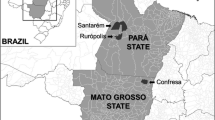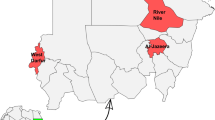Abstract
Ixodid ticks (Acari: Ixodidae) are known as primary vectors of many pathogens causing diseases in humans and animals. Ixodes ricinus is a common ectoparasite in Europe and birds are often hosts of subadult stages of the tick. From 2012 to 2013, 347 birds belonging to 43 species were caught and examined for ticks in three sites of Slovakia. Ticks and blood samples from birds were analysed individually for the presence of Rickettsia spp. and Coxiella burnetii by PCR-based methods. Only I. ricinus was found to infest birds. In total 594 specimens of bird-attached ticks were collected (451 larvae, 142 nymphs, 1 female). Altogether 37.2 % (16/43) of bird species were infested by ticks and some birds carried more than one tick. The great tit, Parus major (83.8 %, 31/37) was the most infested species. In total, 6.6 and 2.7 % of bird-attached ticks were infected with Rickettsia spp. and C. burnetii, respectively. Rickettsia helvetica predominated (5.9 %), whereas R. monacensis (0.5 %) was only sporadically detected. Coxiella burnetii was detected in 0.9 %, Rickettsia spp. in 8.9 % and R. helvetica in 4.2 % of bird blood samples. The great tit was the bird species most infested with I. ricinus, carried R. helvetica and C. burnetti positive tick larvae and nymphs and was found to be rickettsaemic in its blood. Further studies are necessary to define the role of birds in the circulation of rickettsiae and C. burnetii in natural foci.

Similar content being viewed by others
References
Baumann D, Pusterla N, Péter O, Grimm F, Fournier PE, Schär G, Bossart W, Lutz H, Weber R (2003) Fever after a tick bite: clinical manifestations and diagnosis of acute tick-borne infections in north-eastern Switzerland. Dtsch Med Wochenschr 128:1042–1047
Boretti FS, Perreten A, Meli MM, Cattori V, Willi B, Wengi N, Hornok S, Honegger H, Hegglin D, Woelfel R, Reusch CE, Lutz H, Hofmann-Lehmann R (2009) Molecular investigation of Rickettsia helvetica infection in dogs, foxes, humans, and Ixodes ticks. Appl Environ Microbiol 75:3230–3237
Capligina V, Salmane I, Keišs O, Vilks K, Japina K, Baumanis V, Ranka R (2014) Prevalence of tick-borne pathogens in ticks collected from migratory birds in Latvia. Ticks Tick Borne Dis 5(1):75–81
Dubská L, Literák I, Kocianová E, Tarageľová E, Sychra O (2009) Differential role of Passerine birds in distribution of Borrelia spirochetes, based on data from ticks collected from birds during the postbreeding migration period in Central Europe. Appl Environ Microbiol 75:596–602
Dubská L, Literak I, Kverek P, Roubalova E, Kocianova E, Taragelova V (2012) Tick-borne zoonotic pathogens in ticks feeding on the common nightingale including a novel strain of Rickettsia sp. Ticks Tick Borne Dis 3:265–268
Elfving K, Olsen B, Bergstrom S, Waldenstrom J, Lundkvist A, Sjostedt A, Mejlon H, Nilsson K (2010) Dissemination of spotted fever rickettsia agents in Europe by migrating birds. PLoS ONE 5:e8572
Fournier PE, Grunnenberger F, Jaulhac B, Gastinger G, Raoult D (2000) Evidence of Rickettsia helvetica infection in humans, eastern France. Emerg Infect Dis 6:389–392
Fournier PE, Allombert C, Supputamongkol Y, Carusso G, Brouqui P, Raoult D (2004) Aneruptive fever associated with antibodies to Rickettsia helvetica in Europe and Thailand. J Clin Microbiol 42:816–818
Franke J, Meier F, Moldenhauer A, Straube E, Dorn W, Hildebrandt A (2010) Established and emerging pathogens in Ixodes ricinus ticks collected from birds on a conservation island in the Baltic Sea. Med Veter Entomol 24:425–432
Hammer O, Harper DAT, Ryan PD (2001) PAST: paleontological statistics software package for education and data analysis. Palaeontol Electron 4:9
Hildebrandt A, Franke J, Meier F, Sachse S, Dorn W, Straube E (2010) The potential role of migratory birds in transmission cycles of Babesia spp., Anaplasma phagocytophilum, and Rickettsia spp. Ticks Tick borne Dis 1:105–107
Hillyard PD (1996) Ticks of North-West Europe. Field Studies Council, Shrewsbury
Hornok S, Csörgő T, de la Fuente J, Gyuranecz M, Privigyei C, Meli ML, Kreizinger Z, Gönczi E, Fernández de Mera IG, Hofmann-Lehmann R (2013) Synanthropic birds associated with high prevalence of tick-borne rickettsiae and with the first detection of Rickettsia aeschlimannii in Hungary. Vector Borne Zoonotic Dis 13(2):77–83
Hornok S, Kováts D, Csörgő T, Meli ML, Gönczi E, Hadnagy Z, Takács N, Farkas R, Hofmann-Lehmann R (2014) Birds as potential reservoirs of tick-borne pathogens: first evidence of bacteraemia with Rickettsia helvetica. Parasites Vectors 7:128
Hromádko M, Horáček J, Chytil J, Pithart K, Škopek J (1992) Guide to the determination of our passerines 1. Publisher ZUV, Hradec Králové (in Czech)
Hromádko M, Horáček J, Chytil J, Pithart K, Škopek J (1993) Guide to the determination of our passerines 2. Publisher ZUV, Hradec Králové (in Czech)
Hromádko M, Horáček J, Chytil J, Pithart K, Škopek J (1998) Guide to the determination of our passerines 3. Publisher ZUV, Hradec Králové (in Czech)
Ioannou I, Chochlakis D, Kasinis N, Anayiotos P, Lyssandrou A, Papadopoulos B, Tselentis Y, Psaroulaki A (2009) Carriage of Rickettsia spp., Coxiella burnetii and Anaplasma spp. by endemic and migratory wild birds and their ectoparasites in Cyprus. Clin Microbiol Infect 15(Suppl 2):158–160
Jado I, Oteo JA, Aldámiz M, Gil H, Escudero R, Ibarra V, Portu J, Portillo A, Lezaun MJ, García-Amil C, Rodríguez-Moreno I, Anda P (2007) Rickettsia monacensis and human disease, Spain. Emerg Infect Dis 13:1405–1407
Johnston RF (2001) Synanthropic birds of North America. In: Marzluff JM, Bowman R, Donnelly R (eds) Avian ecology and conservation in an urbanizing world. Springer, New York, pp 49–67
Kahl O, Gern L, Eisen L, Lane RS (2002) Ecological research on Borrelia burgdorferi sensu lato: terminology and some methodological pitfalls. In: Gray J, Kahl O, Lane RS, Stanek G (eds) Lyme Borreliosis: biology, epidemiology and control. CAB International, Wallingford, pp 29–46
Labruna MB, Whitworth T, Horta MC, Bouyer DH, McBride JW, Pinter A, Popov V, Gennari SM, Walker DH (2004) Rickettsia species infecting Amblyomma cooperi ticks from an area in the state of Sao Paulo, Brazil, where Brazilian spotted fever is endemic. J Clin Microbiol 42:90–98
Lommano E, Dvořák C, Vallotton L, Jenni L, Gern L (2014) Tick-borne pathogens in ticks collected from breeding and migratory birds in Switzerland. Ticks Tick Borne Dis 5:871–882
Melničáková J, Derdáková M, Barák I (2013) A system to simultaneously detect tick-borne pathogens based on the variability of the 16S ribosomal genes. Parasites Vectors 6:269
Mulder S, van Vliet AJH, Bron WA, Gassner F, Takken W (2013) High risk of tick bites in Dutch gardens. Vector Borne Zoonotic Dis 13:865–871
Nilsson K (2009) Septicaemia with Rickettsia helvetica in a patient with acute febrile illness, rash and myasthenia. J Infect 58:79–82
Nilsson K, Lindquist O, Pahlson C (1999) Association of Rickettsia helvetica with chronic perimyocarditis in sudden cardiac death. Lancet 354:1169–1173
Nilsson K, Elfving K, Páhlson C (2010) Rickettsia helvetica in patient with meningitis, Sweden 2006. Emerg Infect Dis 16:490–492
Ogden NH, Lindsay LR, Hanincová K, Barker IK, Barker IK, Bigras-Poulin M, Charron DF, Heagy A, Francis CM, O’Callaghan CJ, Schwartz I, Thompson RA et al (2008) Role of migratory birds in introduction and range expansion of Ixodes scapularis ticks and of Borrelia burgdorferi and Anaplasma phagocytophilum in Canada. App Environ Microbiol 74:1780–1790
Porter SR, Czaplicki G, Mainil J, Guattéo R, Saegerman C (2011) Q fever: current state of knowledge and perspectives of research of a neglected zoonosis. Int J Microbiol (Article ID 248418)
Regnery RL, Spruill CL, Plikaytis BD (1991) Genotypic identification of rickettsiae and estimation of intraspecies sequence divergence for portions of two rickettsial genes. J Bacteriol 173:1576–1589
Rizzoli A, Silaghi C, Obiegala A, Rudolf I, Hubalek Z, Foldvari G, Plantard O, Vayssier-Taussat M, Bonnet S, Špitalská E, Kazimírová M (2014) Ixodes ricinus and its transmitted pathogens in urban and peri-urban areas in Europe: new hazards and relevance for public health. Front Public Health 2:251
Santos-Silva MM, Sousa R, Santos AS, Melo P, Encarnação V, Bacellar F (2006) Ticks parasitizing wild birds in Portugal: detection of Rickettsia aeschlimannii, R. helvetica and R. massiliae. Exp Appl Acarol 39:331–338
Sekeyová Z, Roux V, Raoult D (2001) Phylogeny of Rickettsia spp. inferred by comparing sequences of ‘gene D’, which encodes an intracytoplasmic protein. Int J Syst Evol Microbiol 51:1353–1360
Sekeyová Z, Mediannikov O, Roux V, Subramanian G, Špitalská E, Krištofík J, Darolová A, Raoult D (2012) Identification of Rickettsia africae and Wolbachia sp. in Ceratophyllus garei fleas from Passerine birds migrated from Africa. Vector Borne Zoonotic Dis 12:539–543
Somov GP, Soldatov GM (1964) On the role of birds in circulation of tick-borne spotted typhus in nature. Zhurnal Mikrobiol Epidemiol Immunobiol 1:126–129
Špitalská E, Kocianova E (2003) Detection of Coxiella burnetii in ticks collected in Slovakia and Hungary. Eur J Epidemiol 18:263–266
Špitalská E, Literák I, Sparagano OAE, Golovchenko N, Kocianová E (2006) Ticks (Ixodidae) from passerine birds in the Carpathian region. Wien Klin Wochenschr 118(23–24):759–764
Špitalská E, Kocianová E, Darolová A, Krištofík J, Literák I, Sekeyová Z (2010) The role of birds in transmittion of rickettsiae. Joint protection of human and animal health. Reviewed proceedings (In Slovak: Úloha vtákov v cirkulácii rickettsií. Spoločná ochrana zdravia ľudí a zdravia zvierat. Recenzovaný zborník), pp 108–111
Špitalská E, Literák I, Kocianová E, Tarageľová V (2011) The importance of Ixodes arboricola in transmission of Rickettsia spp., Anaplasma phagocytophilum, and Borrelia burgdorferi sensu lato in the Czech Republic, Central Europe. Vector Borne Zoonotic Dis 11:1235–1241
Stańczak J, Racewicz M, Michalik J, Cieniuch S, Sikora B, Skoracki M (2009) Prevalence of infection with Rickettsia helvetica in feeding ticks and their hosts in western Poland. Clin Microbiol Infect 15(Suppl 2):328–329
Svensson L (1992) Identification guide to European passerines, 4th edn. Lars Svensson, Stockholm
Tarageľová V, Koči J, Hanincová K, Olekšák M (2005) Songbirds as hosts for ticks (Acari, Ixodidae) in Slovakia. Biológia 60:529–537
Tarageľová V, Koči J, Hanincová K, Kurtenbach K, Derdáková M, Ogden NH, Literák I, Kocianová E, Labuda M (2008) Blackbirds and song thrushes constitute a key reservoir of Borrelia garinii, the causative agent of borreliosis in central Europe. Appl Environ Microbiol 74:1289–1293
Acknowledgments
This study was financially supported by the Project VEGA No. 2/0061/13 from the Scientific Grant Agency of Ministry of Education and Slovak Academy of Sciences and by Projects Nos. 0280-12 and DO7RP–0014–11 from the Slovak Research and Development Agency. The study was partly funded by EU Grant FP7-261504 EDENext and is catalogued by the EDENext Steering Committee as EDENext392 (http://www.edenext.eu). The contents of this publication are the sole responsibility of the authors and don’t necessarily reflect the views of the European Commission. This contribution is also the result of using infrastructure acquired by the project implementation (code ITMS: 26240220044), supported by the Research & Development Operational Programme funded by the ERDF. The authors thank Dr. Veronika Rusňáková-Tarageľová and Dr. Elena Kocianová for their help with identification of ticks.
Author information
Authors and Affiliations
Corresponding author
Ethics declarations
The experiments presented in this paper comply with current laws of the Slovak Republic. Birds were captured, ringed, blood sampled and released under the permission of the Ministry of Environment of the Slovak Republic No. 9368/2011-2.2.
Conflict of interest
No competing financial interest exist. The authors declare no conflict of interest.
Rights and permissions
About this article
Cite this article
Berthová, L., Slobodník, V., Slobodník, R. et al. The natural infection of birds and ticks feeding on birds with Rickettsia spp. and Coxiella burnetii in Slovakia. Exp Appl Acarol 68, 299–314 (2016). https://doi.org/10.1007/s10493-015-9975-3
Received:
Accepted:
Published:
Issue Date:
DOI: https://doi.org/10.1007/s10493-015-9975-3




